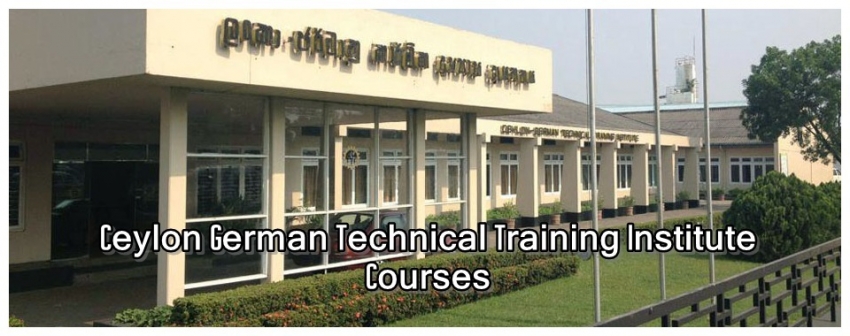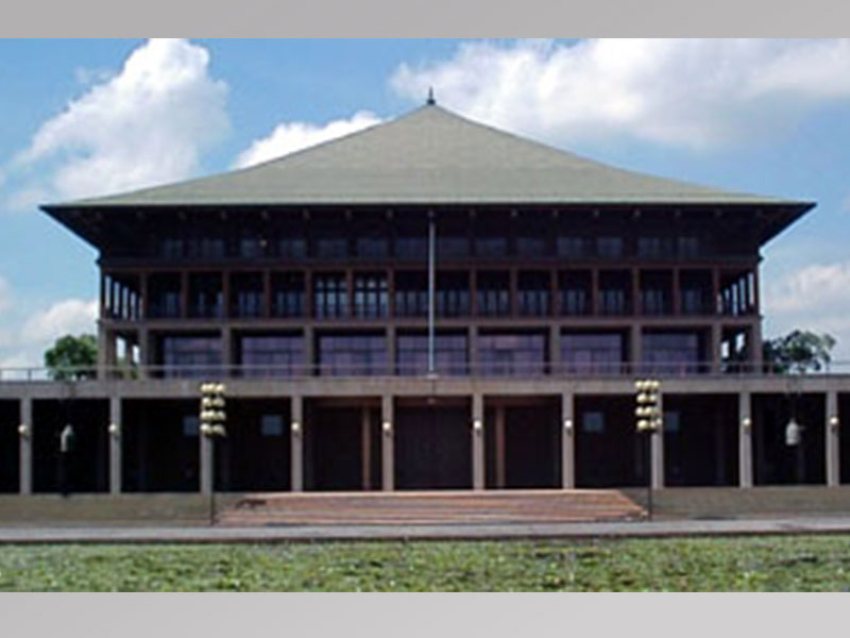“In the longer-term, we are working on a plan to expand the basic workshop practice training program to the outstations, so that students in those areas can do their first year close to their homes. This will free space for higher-level programs at Katubedda, and enable an increase in student intake,” Moonesinghe said, adding that the new government aims to set up four new regional technical training schools, modelled on the CGTTI.They may be affiliated campuses of the CGTTI, in which case, the basis could be laid by the basic workshop practise centres. That way, we could gradually increase the student population by three or four times.
Technological changes will affect what we will need to teach in the future. What is (erroneously) termed the ‘Fourth Industrial Revolution’, the likely upsurge in technological change due to follow the current world economic slowdown, will probably see greater automation and increased use of artificial intelligence (AI).
“We will have to grapple with the human resources problems and changes in technical skill needs arising. This will probably mean we need to expand our machine tool and mechatronic courses, as well as adjust other courses to cope with rapid technological transformation,” he said.However, he said care should be taken when introducing changes, because we must not impair the prestige associated with the CGTTI brand-name, particularly in the international labour market. We receive 3,000 applications each year, but we have only 600 places. We need to increase the number of places, but want of space and staff restrict us.agriculture and services, as well as of the overseas labour market.
The way the Sri Lankan garments industry expanded into Bangladesh is a pointer. Garment manufacturers recruited cheap semi-skilled labour from Bangladesh, but brought their managerial and skilled workers from Sri Lanka. Some 70,000 Sri Lankans have been employed in these positions. Now, our garments industry expands into Africa, using the same pattern. We can expand into overseas labour markets with skills learnt domestically. For example, motor mechanics graduating from the CGTTI have found employment overseas as well as in Sri Lanka.
The government is strongly oriented towards industrialisation and agricultural modernisation. These areas will require cohorts of skilled technicians – machine tool programers, mechanics and designers. Farmers will need to be tech savvy, and they will need the backing of a cadre of skilled workers to look after their machinery. The fisheries sector needs a new generation of skilled sailors, able to navigate and operate sophisticated radar and sonar devices, as well as skilled technicians for maintaining and repairing such equipment. All these workers will, inevitably, also find employment overseas. We also need to take cognisance of foreign programs, such as China’s Belt and Road Initiative, and India’s Mumbai-Moscow trade route. These could ultimately require hundreds of thousands of skilled workers. China has already indicated that it needs skilled workers in railways, shipbuilding and road transport. These are areas in which we should skill our young people.
Unfortunately, our trained personnel tend to be weak in English, vital for communicating in an international environment. We need to ensure that they all have basic technical English skills.
Addressing the dearth of skilled workers, he said at present, over a quarter of the labour force finds employment in the agricultural sector, but produces only about 8% of the country’s GDP. Of course, these figures hide the enormous profits made by middlemen whose wealth, ultimately comes from the farmers. Nevertheless, they indicate how much improvement in labour productivity is needed.
The government is committed to improving these figures, using technology – smart farming, using sensors to report remotely on soil conditions, water needs and so on. The modernisation of agriculture should increase labour productivity considerably, release a horde of mainly young people, who will need skills to enter the modern labour market. The government aims to promote entrepreneurship among the rural young, and if they are given technical skills, they could be the backbone supporting agrarian modernisation.
Sri Lanka needs to follow the lead of China, which has, over the past two decades, been increasing the capital-intensity of its economy, moving away from labour-intensive activities. Rather than employing cheap foreign labour, we need to increase automation and the skills of the workers needed to support that automation.
On the role of CGTTI, he said the CGTTI has come a long way since it moved to its present location in Katubedda in 1974, when my late father, Anil Moonesinghe was chair of the Ceylon Transport Board. It has changed even more since its foundation as the Ceylon-German Training School, sixty years ago.
We have an annual intake of 600 students. Approximately 90% of students, who pass their final examinations, are awarded one of the most valuable certificates in Sri Lanka. The employability of a CGTTI graduate is far higher than that of a graduate from one of our universities. ‘Ceylon-German’ and ‘German Tech’ have become brand names for excellence in technical training. The CGTTI remains concerned primarily with motor mechanics, but the view under the car bonnet has changed immensely in the six decades since its founding, with electronics and automation taking over. Now, our courses encompass many other fields as well, including engineering design. We have a section devoted to mechatronics – the field of automation and robotics. Many students graduating from the school go overseas. Several thousand have built up careers in Australia and the Middle East. The overseas associations of CGTTI alumni have made an invaluable contribution to keep the Institute up-to-date technologically, by gifting the most modern equipment. Since they are in advanced technological environments, they are familiar with the latest equipment and techniques, and know what the institute needs. We are actually looking at ways in which we can highlight the contribution these former students have made to their alma mater and their motherland. Their contribution has enabled the CGTTI to be at the cutting edge of technology. For example, our students study the techniques of 3D printing as well as programing numerically-controlled machine tools.
Unfortunately, we have not been very successful in imparting English language skills, being hampered by a shortage of competent teachers. This is a problem we are grappling with at present.The CGTTI located in Moratuwa is an engineering college set up in 1959 under an agreement made in 1958 between the Governments of the Federal Republic of Germany and Ceylon to supply training assistance in maintenance of the bus fleet, which belonged to the CTB and was located at the central workshops of the CTB at Werahera.With regard to the current workforce and its skills, he said Sri Lankan workers are much more educated and flexible than, say, workers from Bangladesh or Myanmar. They do more than adequately as domestic workers, assembly-line workers or labourers. However, they do not have the levels of skills required in the modern world, to go above this basic level. This is why the Government is determined to transform our workforce into a highly-skilled one within a decade.
In this, the government must combat a regrettable trend, among young males, to opt to drive auto-trishaws. An astonishing 1.2 million people drive trishaws now, about 5% of the population, or 1/6th of the labour force. Of course, not all of them work full-time as taxi drivers – some drive tuk-tuks to supplement their income, while others, particularly people involved in maintenance work, use their trishaws for personal transportation. The job allows them a great deal of flexibility. However, a dramatic improvement in public transport could make most of them unemployed.He said the country needs to create a strong cadre of skilled technicians capable of meeting the needs of local industry,





















